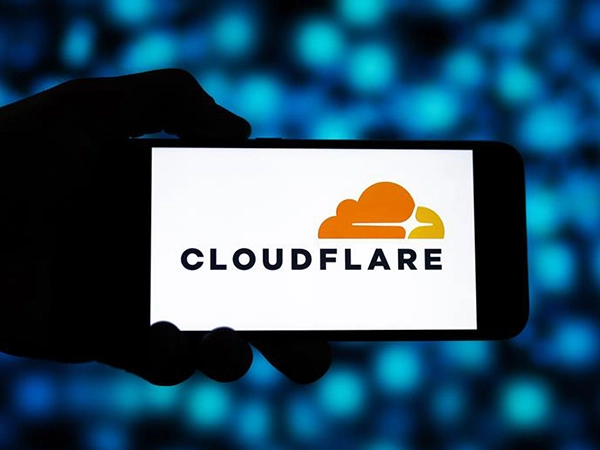Introduction
Initial Access Brokers (IABs) are the overlooked catalysts behind many high-profile ransomware attacks. Operating silently within cybercriminal ecosystems, these brokers compromise enterprise networks and sell access to ransomware gangs, nation-state actors, and other threat groups. While ransomware payloads and affiliates often steal the spotlight, IABs are the ones who unlock the door.
As ransomware-as-a-service (RaaS) models continue to industrialize cybercrime, understanding how IABs operate is vital for defenders to disrupt attacks at the earliest stage. This blog dissects the tactics, techniques, and procedures (TTPs) of IABs, the vulnerabilities they exploit, and how organizations can detect their activity.
What Are Initial Access Brokers (IABs)?
IABs are cybercriminals who specialize in obtaining unauthorized access to enterprise systems and then selling this access to other actors. Unlike ransomware operators who execute attacks, IABs act as suppliers in a broader cybercrime supply chain.
Their business model, often referred to as Access-as-a-Service, is thriving. IABs monetize compromised environments by selling Remote Desktop Protocol (RDP), Virtual Private Network (VPN), or domain admin credentials on dark web forums, encrypted Telegram groups, and invite-only marketplaces. The pricing depends on the target’s size, geography, industry, and perceived value.
Common TTPs Employed by IABs
Credential Theft via Infostealers
IABs frequently use malware like RedLine Stealer or Raccoon to harvest credentials, session cookies, and system information from infected machines. These logs provide access to internal services, corporate VPNs, and even Active Directory environments.
Brute-force & Credential Stuffing
Automated tools are used to brute-force exposed services like RDP or SSH. Public scanning tools (e.g., Shodan) assist in finding these targets. Weak or reused passwords are often the point of entry.
Phishing and Social Engineering
IABs deploy phishing campaigns, often crafted for specific industries or roles (spear-phishing), to gather credentials or drop initial payloads that enable lateral movement within a network.
Exploiting Known Vulnerabilities
Public-facing services with unpatched vulnerabilities—such as Citrix ADC CVE‑2019‑19781, Pulse Secure VPN, or Log4Shell—are top targets. Exploiting these flaws gives attackers administrative access or shell-level control over victim systems.
Web Shell Deployment & Reconnaissance
In many cases, IABs deploy web shells or persistence mechanisms to ensure stable and reusable access. They often conduct limited internal reconnaissance to increase the value of the access they sell, documenting system names, domain hierarchies, and admin credentials.
Zero-Day Exploits, Privilege Escalation, and Supply Chain Compromise
Sophisticated IABs increasingly exploit zero-day vulnerabilities to gain undetected access to networks. They use privilege escalation techniques such as token impersonation and DLL injection to obtain elevated permissions. Additionally, they infiltrate via supply chains—targeting third-party software, MSPs, or dependencies to compromise broader networks.
How IABs Sell and Hand Off Access
IABs operate like brokers in a black-market real estate deal. Once they gain access to a network, they list it on underground forums with details such as industry type, revenue size, and access level (e.g., domain admin or VPN-only).
Some listings are sold publicly, while others go directly to ransomware groups or affiliates with whom IABs maintain relationships. After purchase, the buyer receives credentials, backdoors, or connection methods—allowing them to deploy ransomware, conduct espionage, or steal data.
Pricing ranges from as low as $100 for low-value targets to $10,000+ for enterprise environments with broad access.
Common Vulnerabilities Exploited by IABs
- Exposed RDP/VPN Endpoints: Weak credentials or lack of MFA enable easy brute-force attacks.
- Unpatched CVEs: Notable examples include CVE‑2019‑19781, CVE-2021-26855 (ProxyLogon), and Log4Shell.
- Credential Reuse & Lack of Segmentation: Compromised passwords from third-party breaches often provide a direct path into corporate systems.
Detection and Defense Strategies
Threat Detection & Monitoring
- Monitor for unusual RDP login behavior, foreign IP logins, and off-hours access attempts.
- Use deception tech and honeypots to trap reconnaissance activity.
Network & Endpoint Hardening
- Enforce phishing-resistant MFA across VPN and admin accounts.
- Regularly patch internet-facing services and isolate critical network segments.
Threat Hunting for Persistence
- Scan for unauthorized scheduled tasks, new users, unknown binaries, and web shells.
- Look for abnormal PowerShell, WMI, or registry activity.
Reduce Attack Surface
- Disable or restrict unused remote access services.
- Conduct periodic external vulnerability scans and pen testing.
Use Threat Intelligence
- Monitor IAB forums and dark web chatter.
- Correlate telemetry with IAB-attributed IOCs and TTPs to pre-emptively block or alert.
Apply IPDRR Framework (NIST-CSF & ISO27001:2022)
- Identify: Conduct risk assessments, asset inventories, and third-party reviews.
- Protect: Implement access controls, MFA, and secure configurations.
- Detect: Continuously monitor for anomalies, privilege changes, and lateral movement.
- Respond: Activate incident response plans per ISO27001 A.5.24–25.
- Recover: Restore from validated backups and update defenses post-incident.
Why IABs Matter — Risk Perspective
IABs are redefining the ransomware landscape by dramatically shortening the attack lifecycle. What once required weeks of phishing and internal pivoting can now happen in hours—thanks to IABs offering turnkey access.
With more actors entering the IAB market, prices are dropping, increasing accessibility for lower-skilled adversaries. This “commoditization of compromise” amplifies risk for all sectors, from healthcare and finance to education and manufacturing.
Risks from Vendors and Partners
Vendors and partners with privileged access often lack adequate segmentation, making them attractive targets for IABs. A single compromised MSP can cascade access to multiple clients. Organizations must require vendors to follow baseline security controls (e.g., ISO27001 A.15) and enforce strong monitoring, logging, and least-privilege policies.
Legal Obligations: GDPR & CCPA
If an IAB breaches systems containing personal data:
- GDPR: Report to the supervisory authority within 72 hours and notify impacted individuals if risks exist.
- CCPA: Notify affected consumers promptly and disclose what data was exposed and mitigation steps taken.
Failure to comply may incur legal fines, reputational harm, and regulatory investigations.
New Tactics: Cloud and MFA Exploitation
Modern IABs now target cloud workloads (e.g., misconfigured AWS IAM roles, exposed storage buckets) and exploit weak MFA implementations via fatigue attacks, session hijacking, and unauthorized self-enrollment to bypass authentication systems.
Conclusion
Initial Access Brokers are not just middlemen—they are enablers of modern cyberattacks. Their operations highlight how the initial breach point is often outsourced in the ransomware supply chain. For defenders, this underscores a pressing need to focus on pre-ransomware detection, access control, and real-time threat intel.
By understanding the IAB ecosystem and disrupting it early, organizations can prevent ransomware campaigns before they even begin.
References
- SOC Radar: “What are Initial Access Brokers?”
- Recorded Future: “Initial Access Brokers Key to Rise in Ransomware Attacks”
- ReliaQuest: “The Rise of Initial Access Brokers”
- CISecurity.org: “How IABs Are Changing Cybercrime”
- Ransomware.org: “Handoff from IABs to Ransomware Affiliates”
- Outpost24: “Use of IABs by Ransomware Groups”
- Cymulate: “Cybersecurity Glossary – IABs”











